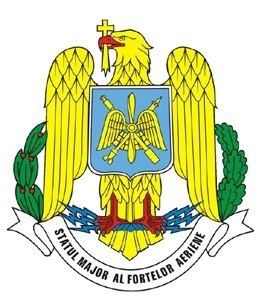 | ||
The Air Arm of the Royal Romanian forces in World War II was officially named the Aeronautica Regala Romana (ARR), or the Romanian Royal Aeronautics, though it is more commonly referred to in English histories as the Forţele Aeriene Regale ale României (Royal Romanian Air Force, FARR), or simply Forţele Aeriene Române (Romanian Air Force). It provided support to land forces, carrying out reconnaissance and mounting air raids between other missions.
Contents
Insignia
The insignia of the FARR was a yellow cross (Michael the Brave cross) in the fuselage and upper and lower wings, and the national colours on the tail, with a yellow engine cowling and vertical band on the fuselage. It was later changed at tricolor (red-yellow-blue) roundels on the fuselage and wings, and a tricolor band on the tail.
History
FARR flew aircraft from Germany and Italy, with their own and other foreign aircraft, as well as captured enemy aircraft. The Romanian Air Force fought against the Magyar Királyi Honvéd Légierö (Hungarian Air Force) during the Hungarian annexation of Transylvania. The most basic unit of their formations was the squadron (Grup). The Romanian Air Force fought alongside the Luftwaffe during the advance into the Ukraine and Crimea, until the Battle of Stalingrad, when the Southern Luftwaffe Command was installed in Bucharest. It also carried out some reconnaissance and patrol missions over the Black Sea alongside Bulgarian units. The Romanian Air Force was tasked with the air defence of the Ploieşti oil installations, and also Bucharest against Allied air raids, and to protect Axis convoys in the Black Sea. These units fought against the USAAF and RAF during their raids against Romania.
The main models of aircraft used include the PZL P.24F, Hawker Hurricane, Heinkel He 112, Messerschmitt 109E and G types, Messerschmitt 110 (for night defence), IAR 80A were used too, alongside other types of interceptors used by the Luftwaffe units in area.
When the country was invaded by Soviet forces, King Mihai I (Michael) ordered Romanian forces to attack Axis forces, and the FARR was allied with Soviet Voenno-vozdushniye Sily against German and Hungarian forces in Transylvania and Slovakia, though some units continued to fight with the Axis in Luftwaffe volunteer units.
Romanian Air Aces
Structure
Aircraft companies
Aircraft constructed under foreign license
Enemy aircraft interned or captured
As a result of the Soviet Invasion of Poland, a large number of Polish Air Force aircraft were interned in Romania. Also, some Soviet aircraft were captured during World War II, as well as a few American B-24 Liberator bombers.
